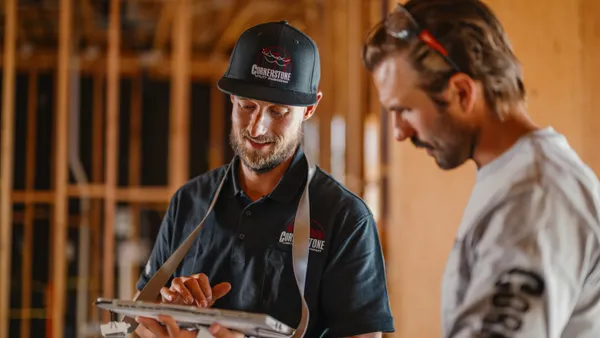Dive Brief:
-
Bethesda, MD–based Clark Construction and Philadelphia-based Ballinger are nearing completion on the A. James Clark Hall, a $90-million engineering and research hub at the University of Maryland's main campus in College Park, MD, according to The Architect's Newspaper.
-
A tight schedule caused the project team to opt for a unitized curtainwall system fitted with a steel, rather than an aluminum, louver shading system to facilitate a passive approach to thermal cooling through the building envelope.
- The 184,000-square-foot facility is designed to meet LEED Silver requirements. The building is scheduled to open later this year.
Dive Insight:
While prefab building promises the improved quality control, efficiencies and safety of a factory setting as compared to that of a traditional job site, the construction industry is still wrangling with the process change of installing off-site components.
With a handful of early adopters pursuing modular construction for residential high-rises, the technology could see wider utilization in 2017 and beyond, particularly if project owners and contractors realize the as-advertised cost and labor savings associated with prefab construction, including the possibility of building a 30-story tower in only 15 days.
"It’s one of those things that people figured out would be a good thing to do. I’ve seen the problem being that no one wants to be the first to do it. If I’m the first and it fails, I’m an idiot," Julian Anderson, president of Rider Levett Bucknall, told Construction Dive earlier this year. "Things change slowly in construction. Once something is embedded, then it takes off pretty quickly."
Sue Klawans, senior vice president and director of operational excellence and planning at the Gilbane Building Company, noted that HVAC assemblies created offsite are among the earliest prefabricated components to see widespread adoption in the industry, which could help the construction method gain traction more broadly.












